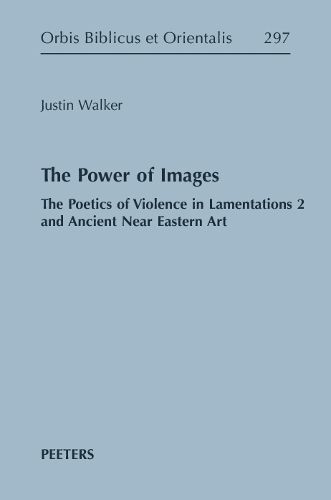Readings Newsletter
Become a Readings Member to make your shopping experience even easier.
Sign in or sign up for free!
You’re not far away from qualifying for FREE standard shipping within Australia
You’ve qualified for FREE standard shipping within Australia
The cart is loading…






The publication of Keel's Symbolism of the Biblical World (German 1972, English 1978) demonstrated the val-ue of ancient Near Eastern iconography for interpreting biblical texts. In the intervening decades since (and of) Keel's work, iconographic exegesis of the Hebrew Bible has witnessed significant methodological and theoretical developments, many of which can be broadly characterized by an increasing concern with issues of histor(icit)y and contiguity in the image-text comparison. The present work represents a (re)turn to a phenomenological approach to iconographic exegesis that is especially concerned with how images and texts might mutually inform one another at the level of their respective poetics. As a test case for such a comparison, this volume examines how the phenomenon of violence figures in Lamentations 2 and in Ashurbanipal's palace reliefs - specifically, one of the Battle of Til-Tuba programs (Southwest Palace, Room 33) and the lion hunt reliefs (North Palace, Room C). The project begins with a discussion of the neurological and cognitive relationship between seeing images with the eye and imagining them with the "mind's eye" as a means of justifying such a phenomenological approach that compares how ancient artists and the biblical author construct the violent images that are seen and imagined in their works, respectively (ch. 1). It then conducts detailed analyses of the poetics of violent imagery in Lamentations 2 (chs. 2-3), the Battle of Til-Tuba reliefs (ch. 4), and Ashurbanipal's lion hunt reliefs (ch. 5) before providing an extended comparison of the similar and divergent ways that violence figures in the literary and textual images of each piece (ch. 6). Overall, the volume profers new interpretive insights concerning the phenomenon of violence in the ancient Near Eastern artwork and Lamentations 2 specifically - particularly as it pertains to the poem's construction of Yahweh's and Zion's bodies, its perspectival play, its manipulation of time, and the "power" of its imagery in eliciting the divine gaze. The project also demonstrates the utility of ancient Near Eastern art for illuminating not only what but also how a given phenomenon figures in biblical poetry and vice versa.
$9.00 standard shipping within Australia
FREE standard shipping within Australia for orders over $100.00
Express & International shipping calculated at checkout
The publication of Keel's Symbolism of the Biblical World (German 1972, English 1978) demonstrated the val-ue of ancient Near Eastern iconography for interpreting biblical texts. In the intervening decades since (and of) Keel's work, iconographic exegesis of the Hebrew Bible has witnessed significant methodological and theoretical developments, many of which can be broadly characterized by an increasing concern with issues of histor(icit)y and contiguity in the image-text comparison. The present work represents a (re)turn to a phenomenological approach to iconographic exegesis that is especially concerned with how images and texts might mutually inform one another at the level of their respective poetics. As a test case for such a comparison, this volume examines how the phenomenon of violence figures in Lamentations 2 and in Ashurbanipal's palace reliefs - specifically, one of the Battle of Til-Tuba programs (Southwest Palace, Room 33) and the lion hunt reliefs (North Palace, Room C). The project begins with a discussion of the neurological and cognitive relationship between seeing images with the eye and imagining them with the "mind's eye" as a means of justifying such a phenomenological approach that compares how ancient artists and the biblical author construct the violent images that are seen and imagined in their works, respectively (ch. 1). It then conducts detailed analyses of the poetics of violent imagery in Lamentations 2 (chs. 2-3), the Battle of Til-Tuba reliefs (ch. 4), and Ashurbanipal's lion hunt reliefs (ch. 5) before providing an extended comparison of the similar and divergent ways that violence figures in the literary and textual images of each piece (ch. 6). Overall, the volume profers new interpretive insights concerning the phenomenon of violence in the ancient Near Eastern artwork and Lamentations 2 specifically - particularly as it pertains to the poem's construction of Yahweh's and Zion's bodies, its perspectival play, its manipulation of time, and the "power" of its imagery in eliciting the divine gaze. The project also demonstrates the utility of ancient Near Eastern art for illuminating not only what but also how a given phenomenon figures in biblical poetry and vice versa.